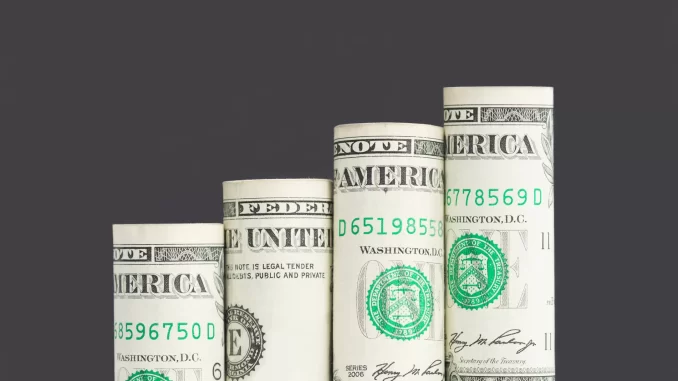
By Hank Russell
The state comptroller’s Office recently released a report that shows, during the Federal Fiscal Year (FFY) 2023, New York State received $1.06 from the federal government for every $1 the state sent to Washington, D.C. This is the fourth year in a row that New York received a net return.
According to state Comptroller Tom DiNapoli, in FFY 2023, New York generated approximately $320.1 billion in tax collections, 7.5% of all U.S. tax collections in FFY 2023, while the state represented 5.8% of the nation’s population. At $16,355, New York’s per capita contribution to the federal treasury was 27.8% more than the national level, and New York’s per-capita tax contribution ranks highly in most tax categories.
Although the amount New York got was greater than what the state paid, it was below the national average of #1.32. Further, the state was ranked 21st in the nation.
“The distribution of federal resources—and the fiscal relationship between states and the federal government—is complex,” DiNapoli wrote in his monthly message. “The federal budget plays an integral role in state economies and budgets.”
DiNapoli noted that the federal pandemic aid helped the state stay in positive numbers, but with President Donald Trump calling for the Department of Government Efficiency (DOGE) to cut out fraud and waste, the state might not be so fortunate the next FFY in 2024. “With the end of pandemic aid, this may be the last year we find New Yorkers with a positive return from Washington,” DiNapoli said.
Among the key findings in DiNapoli’s report:
- In FFY 2023, federal expenditures for each U.S. resident were on average $4,089 more than they paid in federal taxes; for New York residents, it was $912 per capita.
- New York generated $16,355 per capita, ranking it third in per-capita contributions to the federal treasury, and received $17,266 per capita, ranking it 21st in per-capita federal spending.
- New York is tops in the nation in spending on rental assistance and public housing with $295 per capita, second in Medicaid expenditures ($3,082 per capita), fourth in spending on the Supplemental Nutrition Assistance Program (SNAP) ($533 per capita) and sixth in Supplemental Security Income ($238 per capita).
- The state is in the bottom 10 in spending in the following areas: federal employee wages and salaries ($459 per capita, 42nd), veterans benefits ($445 per capita, 49th), highways ($103 per capita, 49th) and federal employees retirement ($216 per capita, 50th).
Individual income taxes represent the largest portion of taxes paid; New York’s were $8,745 per capita — 35.9% higher than the national average of $6,433, according to the report. The second largest component of federal revenues reflects payments for social insurance taxes and contributions, including sources that finance programs for Social Security and Medicare, among others.
New York’s per capita contribution for such payments ($5,472) was 14.2% above the national level of $4,792, ranking it seventh in the nation, based on data from the report. The state ranked first on per capita corporate income taxes with $1,840, which is 47% higher than the national per-capita level of $1,252.
Executive Orders issued by the President paused disbursement of funds from the Infrastructure Investment and Jobs Act (IIJA) and the Inflation Reduction Act (IRA), DiNapoli said. The state expected to receive $13.6 billion in IIJA funds and $2 billion from the IRA, backing projects ranging from roadways and bridges to mass transit to broadband to clean energy and resiliency. While some funding has been unfrozen, it is unclear how much the state and local governments and state residents can rely on these funds.
Other federal actions have also impacted the receipt of funds by states. In New York, these include the potential clawback of approximately $158 million in Elementary and Secondary School Emergency Relief aid from school districts and the freezing of $367 million in funds for public health, addiction services, and mental health programming. DiNapoli said this loss of federal funding translates into weaker state services in crucial areas such as virus surveillance, laboratory support and testing, transitional housing for individuals in recovery, and mental health supports.
“Actions taken by the Trump Administration and Congress may cut health care, food assistance, infrastructure and other critical programs to the detriment of all New Yorkers,” DiNapoli said. “Major cuts in federal funding simply cannot be replaced by state taxpayers, will reduce the services the state provides and will exacerbate the long-standing history of New Yorkers sending more of their hard-earned tax dollars to the federal government than they get back.”

